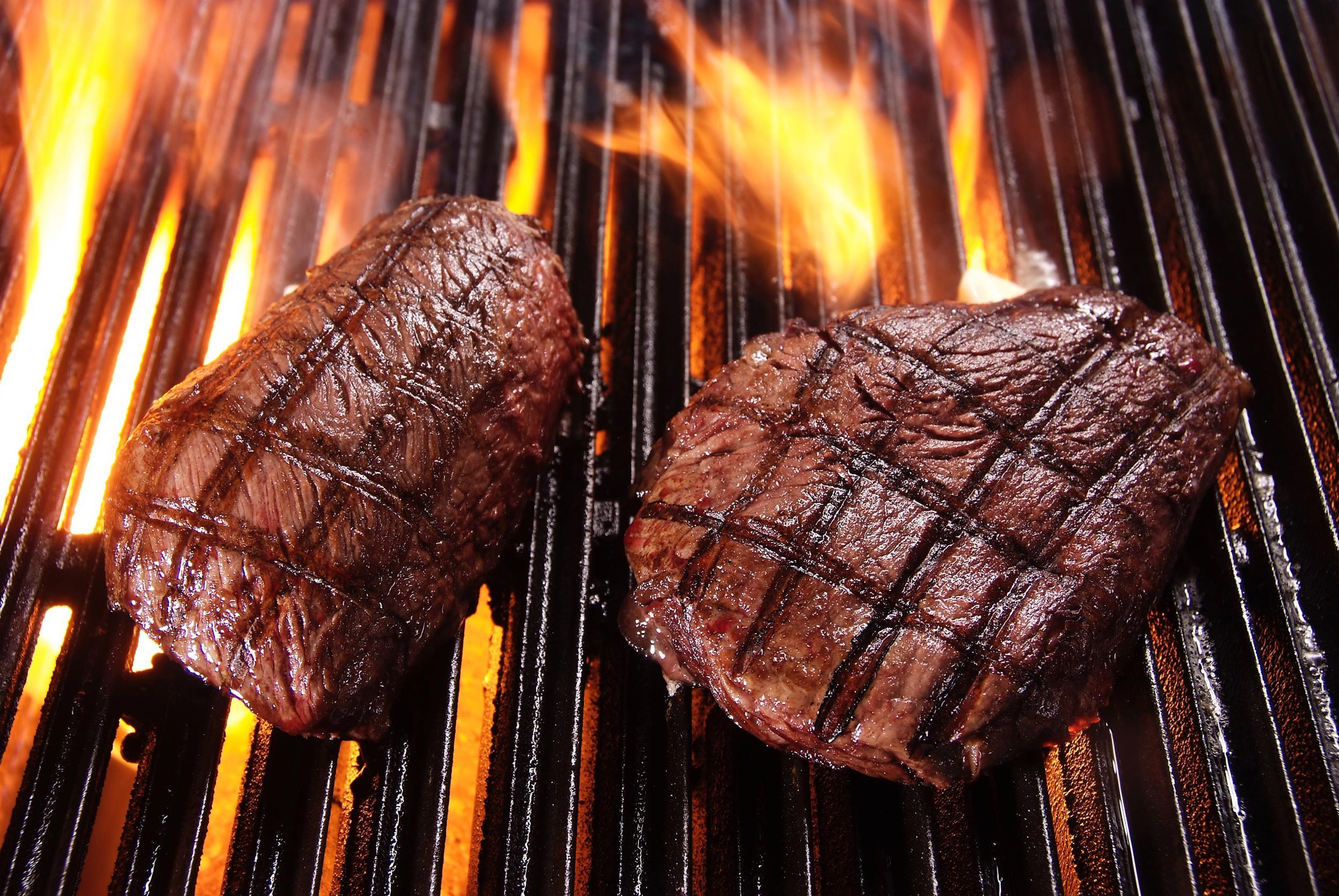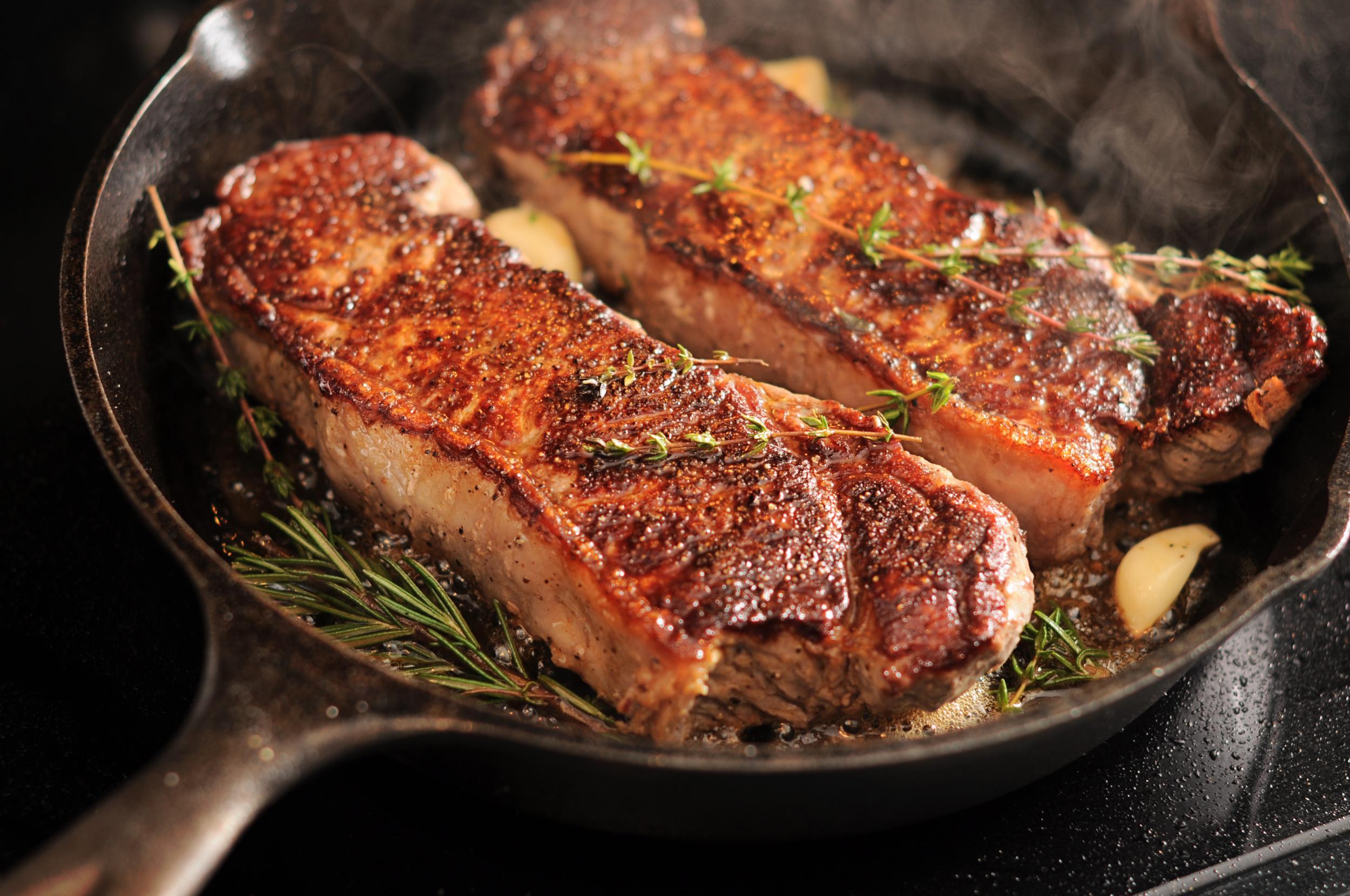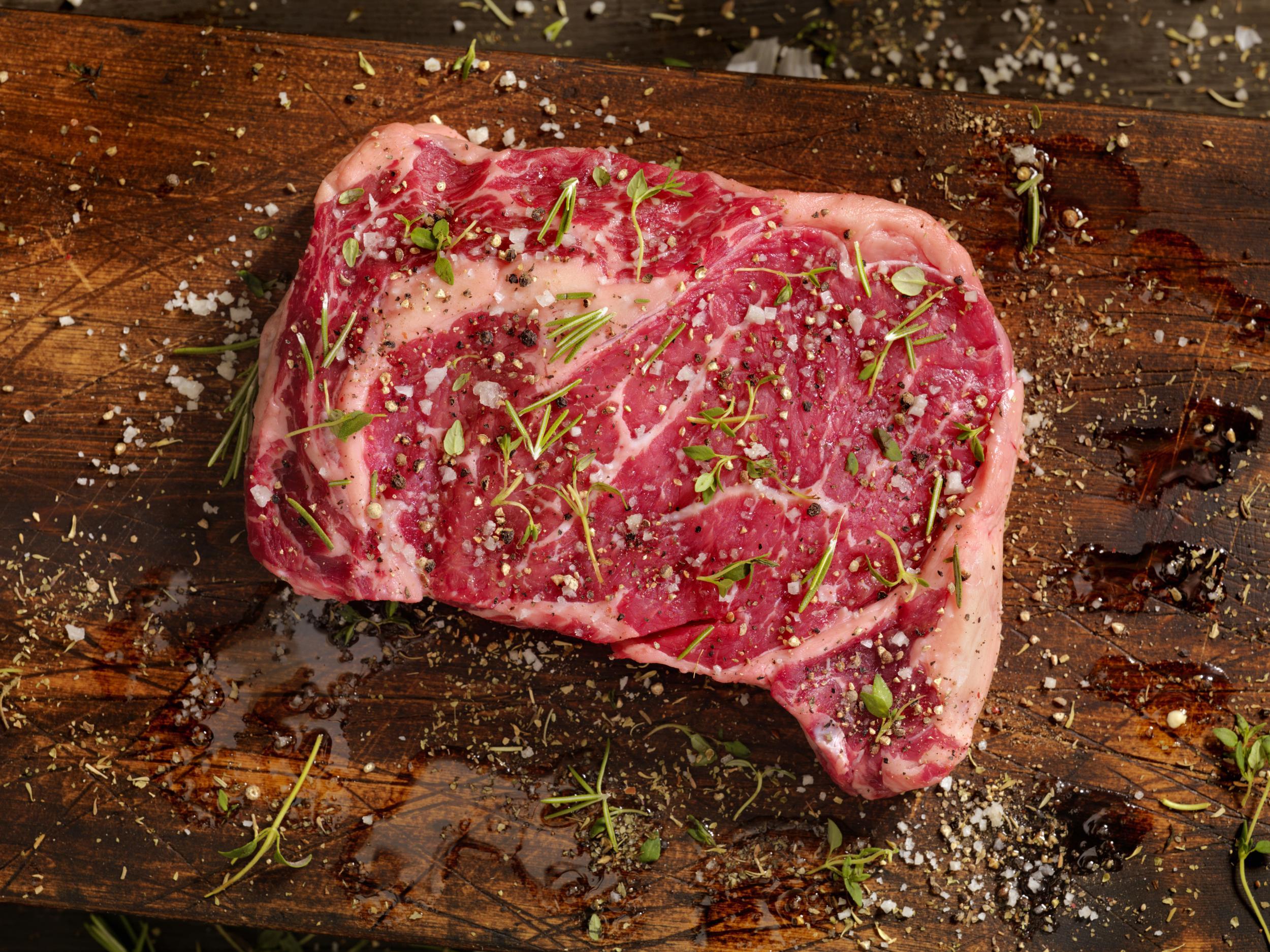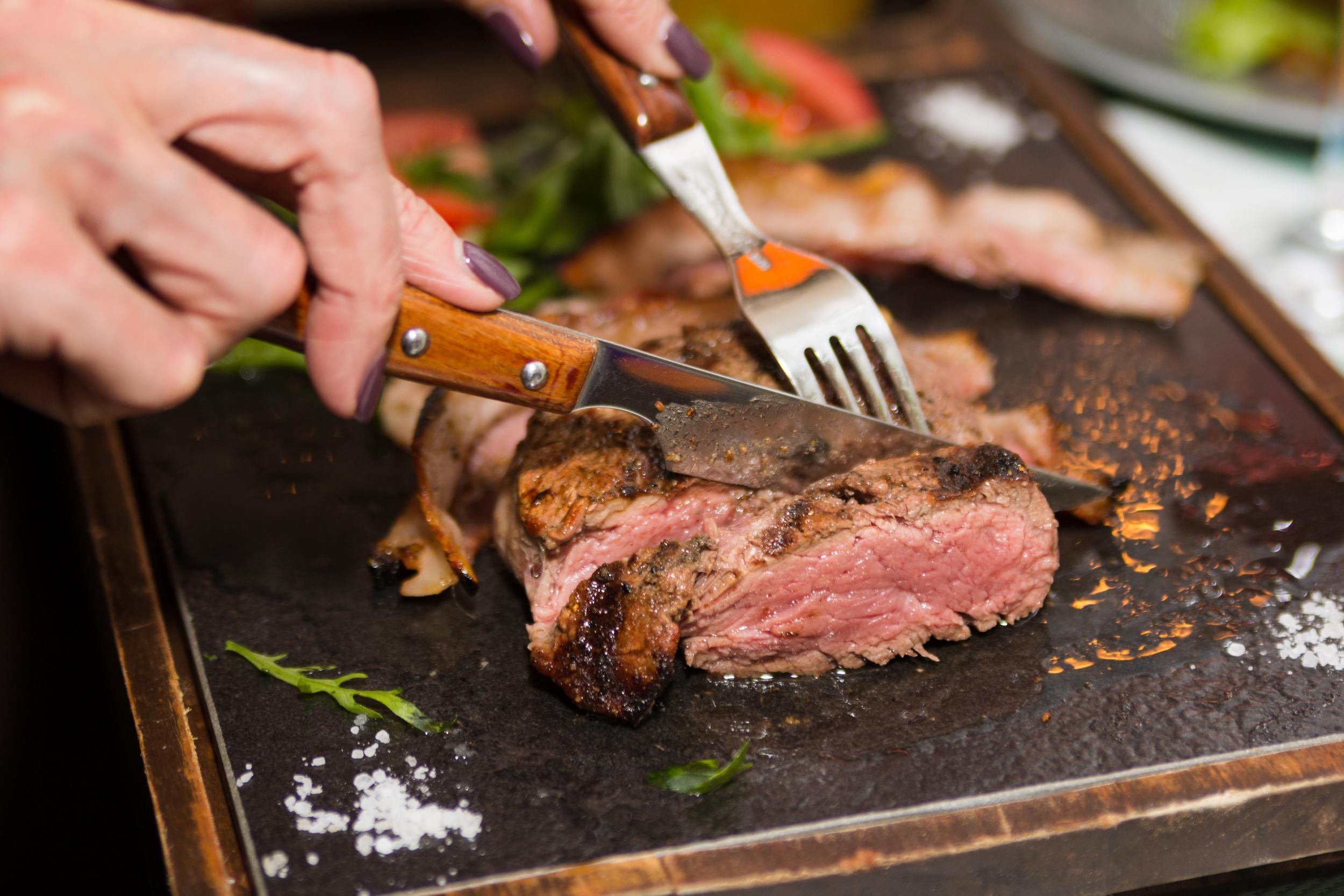Five common mistakes people make when cooking steak, according to top chefs
Never slice a steak immediately after it's finished cooking
Cooking a perfectly seasoned and seared steak isn’t necessarily hard, but there are still various pitfalls that amateur chefs fall victim to.
From placing the meat on a lukewarm pan to trying to achieve a good sear by relying on an oven alone, a good steak can be ruined in a matter of minutes.
Nothing compares to the error of slicing a steak that has just finished cooking, however, and watching as the flavourful juices escape the meat before it's even reached your plate.
To find out the biggest mistakes people make when cooking steak, and what to do instead, we spoke to top chefs - who revealed their tips for a perfectly cooked piece of meat.
Use a grill or a pan - and only rely on the oven in certain situations
According to German Rizzo, the chef and owner of Plado Tasting Bar, there is a “real art to cooking a good steak” - even though the process is relatively simple.

“It needs to be prepared on a grill with salt and pepper,” he told us. “You really don’t need anything more, just season it properly and it’s good to go.”
While you typically wouldn’t use an oven to cook steak, Rizzo said the oven can be used if the cut of meat is on the thicker side.
“I only recommend using an oven if it’s a very thick cut steak - here you would grill first, don’t let the temperature reach the middle of the steak, then place it in the oven to finish it off,” he said.
Clayton Rollison, chef at Lucky Rooster Kitchen + Bar agreed that the grill is the best option in warmer weather - but that you “can’t go wrong cooking the steak in a sizzling hot cast iron skillet on the stove”.
According to Dustin Willett, executive chef at the English Grill in The Brown Hotel, either option is fine, as long as you remember not to “overload the pan" - or face the possibility of overcooking.
“A good cut of steak should be prepared medium rare or medium for the best flavour and texture,” he explained. “Steak can be cooked on the stovetop in a heavy bottomed skillet (or on the grill) just be sure not to overload the pan or you won't get a good sear on the meat. If the steaks are very thick, they may require a little time in the oven.”
When it comes to using a pan, you need to make sure it’s hot enough
If you do prefer to cook your steaks on the stove, one necessity is ensuring the pan is hot enough - before you put the steak on.
“The most common mistakes when cooking a steak relate to the heat of the pan - and the ensuing sear,” Nickolas Martinez, executive chef at Intersect by Lexus, told us. “For a typical 12-16oz New York strip steak, which is a cut of meat that most home cooks would buy, I cook it for about four minutes per side on an extremely high heat – the oil should be smoking – and then allow it to rest for about five minutes at room temperature.”

After a brief rest, Martinez recommends returning the steak to the pan for some added flavour.
“Once the steak is rested, and the pan is cooled slighted – but not cold – I drop it back in the pan to brown with a healthy knob of butter with garlic and thyme, allowing it to cook in the butter mix at a medium to medium-high heat until it reaches a beautiful medium rare, which is about an additional three minutes on each side,” he said.
A very hot pan is also integral in getting a “nice delicious crust on your steak,” according to Annie Pettry, chef and owner of Decca Restaurant.
“A common mistake when cooking steak is cooking it in a pan that is not hot enough,” she told us. “A very hot pan, preferably a cast iron or carbon steel skillet, will ensure that you get a nice delicious crust on your steak.”
The heat of the pan isn’t the only temperature to be aware of when cooking steak, according to Sara Bradley, chef at freight house, who told us that the meat comes out better when it is cooked while it's still cold from being refrigerated.

“Home cooks let their steaks come to room temperature before searing them, but I think you should cook a steak from cold,” she explained. “Sear the outside super hard in a cast iron skillet, then let it come to room temperature.”
To finish the steak off and ensure the perfect temperature, Bradley said she relies on the oven.
“I always bring the steak up to the proper temperature in the oven after it is seared,” she said.
According to Glenn Rolnick, director of culinary operations for the Alicart Restaurant Group, which includes Carmine’s and Virgil’s, successful steak cooking starts a few hours before the meat is even put on the heat.

"When cooking steak it's important to season for a few hours before cooking, especially if the steak is thick cut,” he told us.
Once you’ve achieved a good sear, he also wants to remind home chefs to avoid pressing down on the meat - “as you want to keep all the juices in the steak." The same is also true for burgers.
Perhaps the biggest error people make when cooking steak is slicing it immediately after it’s finished cooking, according to many of the chefs we spoke to.

“The biggest mistake is that people don't let steak rest before serving and slicing,” Fortunato Nicotra, executive chef at Felidia told us, before revealing his technique for a perfectly cooked prime strip loin.
“I sear on high heat for two to three minutes in olive oil on each side so it's medium rare in the middle and has a crispy crust on the outside,” he said, adding: “I then drizzle with extra virgin olive oil and smoked sea salt. For those who like pepper, that should be added at the end as well."

Rollison agreed that a resting period is necessary for a perfectly cooked and juicy steak.
“People serve the steak as soon as it comes off the heat. You have to let your meat rest. Depending on the cut of the steak, you should rest it 10 and up to 45 minutes for the larger cuts like prime rib,” he told us.
Join our commenting forum
Join thought-provoking conversations, follow other Independent readers and see their replies
Comments
Bookmark popover
Removed from bookmarks